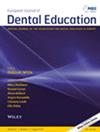Evaluating Haptic Virtual Reality Simulator for Pulpotomy Training in Primary Teeth: A Pilot Study on Dental Student Pespectives
Abstract
Purpose
To evaluate dental students' perspectives of using haptic virtual reality simulator (HVRS) in the training of pulpotomy procedures in primary teeth, and to compare its perceived educational effectiveness with conventional mannequin-based simulator.
Material and Methods
Twenty-four fourth-year dental students from the University of Valencia were randomly assigned to two groups (n = 12 each). One group performed pulpotomy training first with a mannequin-based model and then with HVRS, while the other group followed the reverse sequence. Both training modalities involved standardised instruction and hands-on practice. Following both sessions, participants completed a 12-item Likert-scale survey assessing perspectives of realism, skill acquisition, confidence and overall satisfaction. Descriptive statistics, Mann–Whitney U tests and Spearman correlation analyses were used to examine group differences and item associations. In addition to self-reported data, procedural timing was also recorded to provide complementary objective insight into student performance.
Results
Students in the HVRS group reported significantly higher agreement on items related to tactile realism, differentiation of tooth structures and improvement of fine motor skills. Strong correlations were observed between perceived realism and confidence (ρ = 0.88), as well as between satisfaction and the desire to apply HVRS in additional procedures (ρ = 1.00). The internal consistency of the questionnaire was high (Cronbach's α = 0.91).
Conclusions
HVRS was perceived as a realistic and motivating tool for pulpotomy training in paediatric dentistry. Students highlighted its value as a complementary method to conventional simulators, supporting psychomotor skill development and learner confidence. These findings suggest that HVRS may enhance educational outcomes when integrated into preclinical dental curricula.


 求助内容:
求助内容: 应助结果提醒方式:
应助结果提醒方式:


